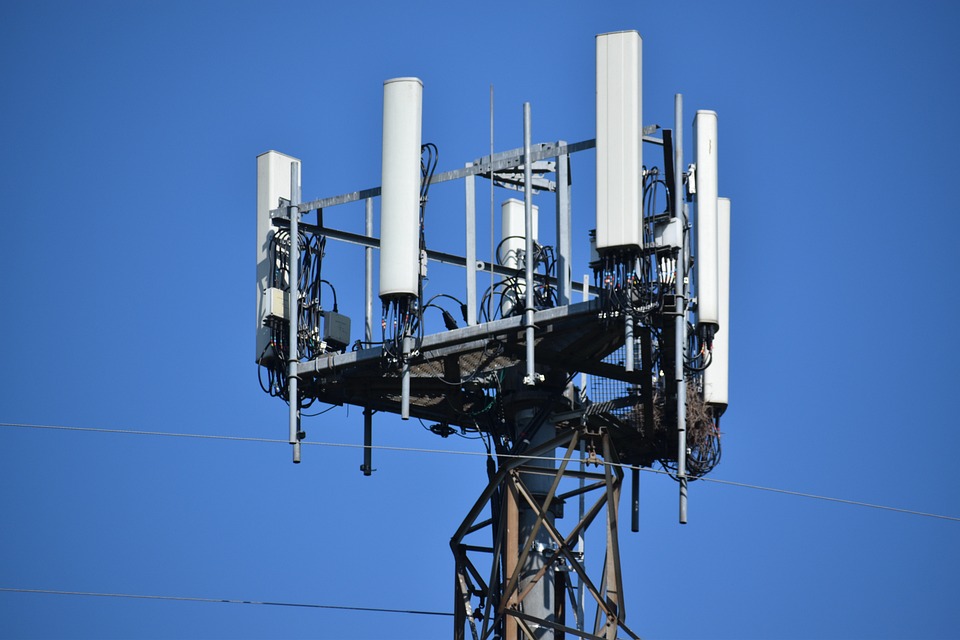How the GPS Antenna and Technology an Integral Part of Precision Farming?
 The technology working behind global positioning systems, GPS antennas, linked computers, go-sensors, and a handful of other similar devices have laid the foundations of precision farming.
The technology working behind global positioning systems, GPS antennas, linked computers, go-sensors, and a handful of other similar devices have laid the foundations of precision farming.
In a nutshell, practical applications of the GPS can be found in various areas of concern in farming such as mapping yields, fertilizer application, variable rate planting, field mapping, parallel swathing, and variable rate pesticide application. This shows us that GPS as a technology indeed is playing a pivotal role in optimizing profits and in obtaining sustainable farming with an alleviated environmental impact.
With technology finding its way into every aspect of modern living, we say that there is no reason why farming should become an exception. Tractor machines used in farms have displaced draft horses which serves as the driving power for planting and harvesting equipment.
By the same token, GPS has also taken the place of the naked human eye, experienced guesswork, and field location when it comes to crop scouting, tractor guidance, and several other farm tasks.
GPS technologies also allow people working on a farm to carry out their work even during low visibility weather conditions like when it is raining and there is a heavy downpour, or on occasions when the surroundings is enveloped by dense fog. GPS even allows you to work on your farm even when there is nothing but darkness around.
By melding together geographic information systems and GPS, the stage for precision farming as well as site-specific farming can be set.
What is Precision Farming?
Precision farming has something to do with the collection of timely geospatial information on plant and soil requirements. Aside from this, this also involves prescribing the use of site-specific medication aimed at protecting the surrounding environment without leaving an adverse impact on expected agricultural yields.
Nowadays, there is an increasing number of farmers who are taking advantage of products derived from the GPS because it is helping them enhance their farming activities and maximizing yields. The scope of work of GPS antenna or receivers can include the collection of irrigation relevant information and mapping fields. Farmworkers rely on it when it comes to identifying problem bound areas within their farmlands.

GPS and its inherent accuracy make it possible for farmers to determine the distances that exist between points of interest like road location. This allows farmworkers to navigate their way to different locations of interest every now and then, especially if they need to keep an eye on crop health or if there is a need for them to gather and collect soil samples.
Real-Time Data Collection
GPS systems allow for real-time data collection. Hence, accurate position information can be anticipated which allows you to efficiently manipulate and analyze an inordinate amount of geospatial data.
In past decades, people working in farmlands find it very challenging to correlate crop yield and production methods with varying land sizes. This goes to show that their ability to develop plants is constrained by elements that are beyond their control.
The only practical solution most farmworkers see to get over this is soil treatment. They are hoping that it will help improve their farming productivity.
What Researchers Need GPS Data For?
Agricultural scientists and researchers are utilizing GPS data to efficiently find effective ways to combat weed infestations in the field, fight pests, and exterminate insects that are infesting crops.
GPS-equipped crop-dusters can accurately fly swaths over farmlands while at the same time also they can apply chemical solutions to farmland areas that strongly need it. This measure will help in keeping down the chemical drift. This usually happens when you reduce the number of spray applications in regions that may have no need at all for chemical spraying.
How the GPS Antenna and Technology an Integral Part of Precision Farming? Read More »
 The technology working behind global positioning systems, GPS antennas, linked computers, go-sensors, and a handful of other similar devices have laid the foundations of precision farming.
The technology working behind global positioning systems, GPS antennas, linked computers, go-sensors, and a handful of other similar devices have laid the foundations of precision farming.
In a nutshell, practical applications of the GPS can be found in various areas of concern in farming such as mapping yields, fertilizer application, variable rate planting, field mapping, parallel swathing, and variable rate pesticide application. This shows us that GPS as a technology indeed is playing a pivotal role in optimizing profits and in obtaining sustainable farming with an alleviated environmental impact.
With technology finding its way into every aspect of modern living, we say that there is no reason why farming should become an exception. Tractor machines used in farms have displaced draft horses which serves as the driving power for planting and harvesting equipment.
By the same token, GPS has also taken the place of the naked human eye, experienced guesswork, and field location when it comes to crop scouting, tractor guidance, and several other farm tasks.
GPS technologies also allow people working on a farm to carry out their work even during low visibility weather conditions like when it is raining and there is a heavy downpour, or on occasions when the surroundings is enveloped by dense fog. GPS even allows you to work on your farm even when there is nothing but darkness around.
By melding together geographic information systems and GPS, the stage for precision farming as well as site-specific farming can be set.
What is Precision Farming?
Precision farming has something to do with the collection of timely geospatial information on plant and soil requirements. Aside from this, this also involves prescribing the use of site-specific medication aimed at protecting the surrounding environment without leaving an adverse impact on expected agricultural yields.
Nowadays, there is an increasing number of farmers who are taking advantage of products derived from the GPS because it is helping them enhance their farming activities and maximizing yields. The scope of work of GPS antenna or receivers can include the collection of irrigation relevant information and mapping fields. Farmworkers rely on it when it comes to identifying problem bound areas within their farmlands.

GPS and its inherent accuracy make it possible for farmers to determine the distances that exist between points of interest like road location. This allows farmworkers to navigate their way to different locations of interest every now and then, especially if they need to keep an eye on crop health or if there is a need for them to gather and collect soil samples.
Real-Time Data Collection
GPS systems allow for real-time data collection. Hence, accurate position information can be anticipated which allows you to efficiently manipulate and analyze an inordinate amount of geospatial data.
In past decades, people working in farmlands find it very challenging to correlate crop yield and production methods with varying land sizes. This goes to show that their ability to develop plants is constrained by elements that are beyond their control.
The only practical solution most farmworkers see to get over this is soil treatment. They are hoping that it will help improve their farming productivity.
What Researchers Need GPS Data For?
Agricultural scientists and researchers are utilizing GPS data to efficiently find effective ways to combat weed infestations in the field, fight pests, and exterminate insects that are infesting crops.
GPS-equipped crop-dusters can accurately fly swaths over farmlands while at the same time also they can apply chemical solutions to farmland areas that strongly need it. This measure will help in keeping down the chemical drift. This usually happens when you reduce the number of spray applications in regions that may have no need at all for chemical spraying.



